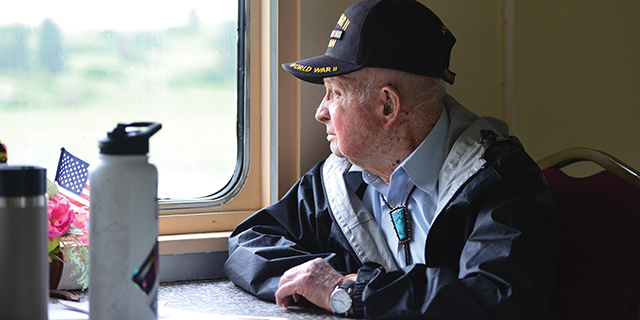Fire camp moves to Summit Prairie
Published 5:00 pm Thursday, August 1, 2002
SUMMIT PRAIRIE – Combining two into one sometimes can equal a result that’s greater than the sum of the individual parts. That’s the result following the consolidation of fire camps on the Malheur National Forest this past week. The decision was made after fire officials realized that fire camps at Prairie City High School and Bear Valley simply could not meet the needs of firefighters and the firefighting effort on the Malheur National Forest.
Incident Commander Joe Wood stated, “When the fire team managing the Malheur Complex completed their 14-day assignment, the forest asked our team to add the Malheur Complex to our area of responsibility. When we looked at both the Prairie City and the Flagtail fire camps, neither could accommodate our large number of firefighters. Neither was in the most convenient location to easily reach all the fires in our area. The most logical spot was Summit Prairie.”
The new fire camp at Summit Prairie was organized on Friday, July 26. It will accommodate the needs of nearly 1,700 firefighters while providing the ability to attack the fires from a more central location and doing so in a more cost-effective manner.
Modern-day wildland fire suppression takes a wide variety of people that bring with them a wide variety of skills to the task. Large fire camps need to be able to provide the means for those people to effectively and efficiently do their jobs. On any given day Summit Prairie fire camp will provide food service for three meals a day, law enforcement, safety, sanitation, a laundry and more to ensure that the needs of the firefighters are being met.
Like most any small town in the country, Summit Prairie fire camp is set up to utilize the latest technology. In a location without telephones, satellite dishes provide telephone and Internet connections to the outside world. Firefighters can utilize these phones to talk with relatives at home. Using the Internet fire managers can quickly share information between agencies, individual fires and the pubic to better organize firefighting efforts.
In fire seasons past, residents of the community may have seen vast tent cities housing fire camps. Increasingly, the nature of fire camps is changing to meet the changing needs of fire managers and the fires they combat.
“For example, we have learned that dusty conditions of fire camps wreck havoc on computers, printers and other equipment. As a result, tents are being replaced with trailers that protect sensitive equipment. This serves to increase our efficiency while keeping important equipment fully functioning, thus saving time and money,” said Wood.
In addition, as fire managers looked into the costs of renting large tents versus trailers, it turns out that savings can be found here as well. Given the nature of the fires on the Flagtail/Malheur Complex, it’s possible that there may be a longer-term commitment than usual to keeping Summit Prairie fire camp open.
The fire season in east central Oregon arrived earlier this year, and it’s possible the season will last deep into the summer and early fall, the Forest Service reported. This means that the Summit Prairie fire camp is likely to remain open longer as crews continue to suppress fires and later begin the long- term task of mop-up and forest rehabilitation.
“As a result, when we explored our present and potential needs at this fire camp including 30-day rental costs between tents and trailers, it turns out that the trailers were a better option for us,” said Wood.
While fire camps, such as Summit Prairie provide an effective means of combating wild land fires, the role that local communities play in those camps cannot be underestimated.
“Many of the resources we need to run this camp come from businesses and individuals nearby. It is simply the case that we could not do our jobs without the support of the community. We want to thank everyone who has opened their business and provided their talents to cope with this emergency in their community,” said Wood.
The Flagtail/Malheur Complex, consisting of the Easy Fire and the High Roberts Fire is burning in mixed conifer, heavy slash, dead and down material and ponderosa pine. Total acreage for the fires is estimated to be about 24,000. Approximately 1,691 fire fighting personnel are assigned to the Flagtail/Malheur Complex.





